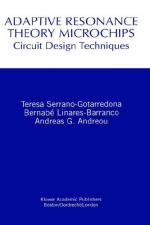|
This section contains 518 words (approx. 2 pages at 300 words per page) |

|
In electricity, the behavior of an alternating circuit (AC) is determined by whether its circuit elements are connected in series or in parallel. Resonance describes a characteristic frequency determined by the values of the resistance (in units of ohms), capacitance (in units of farads), and inductance (in units of henrys) of the circuit. There are accordingly two types of resonance: series resonance, for which the condition of resonance is minimum impedance and zero phase, and parallel resonance, the most common in electronic applications, for which the condition of resonance is minimum current and a phase change.
A circuit consisting of resistors, inductors, and capacitors connected in series obeys Kirchhoff's voltage law which states that the sum of the emf's in a closed circuit is equal to the sum of the potential difference of the components. The reactance of the circuit is equal to: X = L -...
|
This section contains 518 words (approx. 2 pages at 300 words per page) |

|


